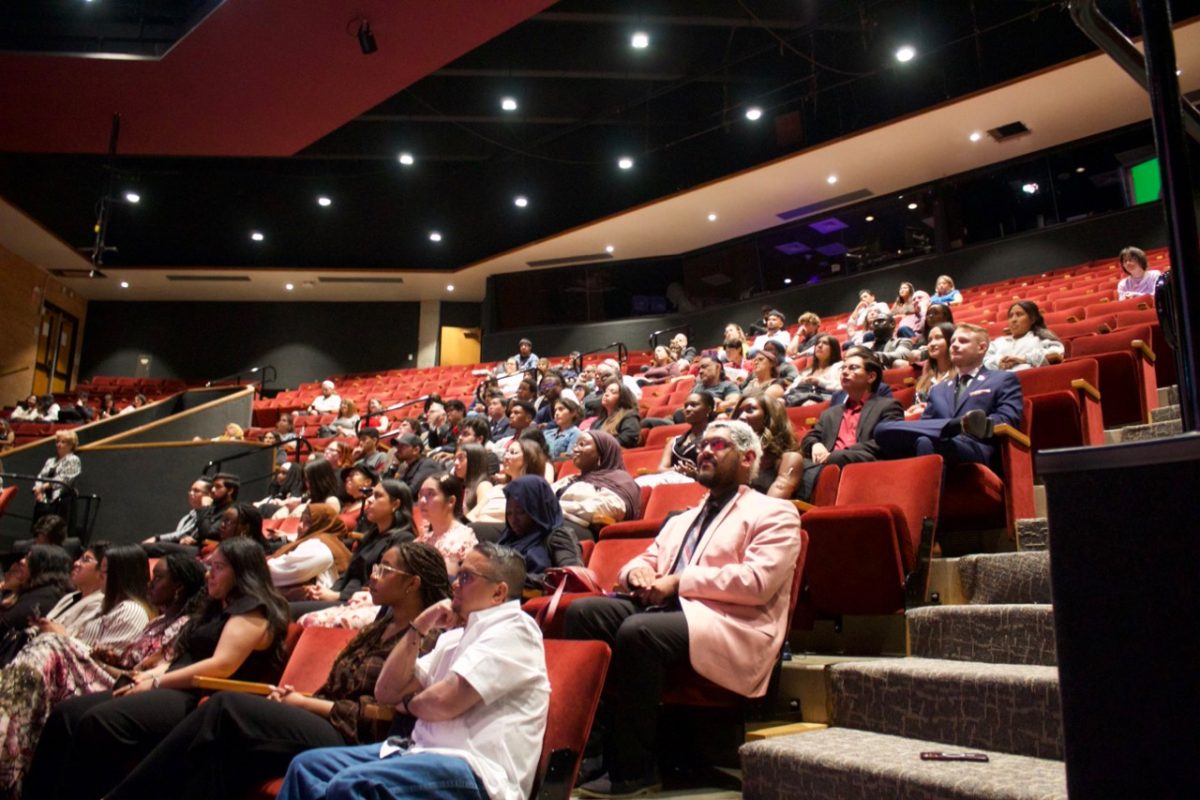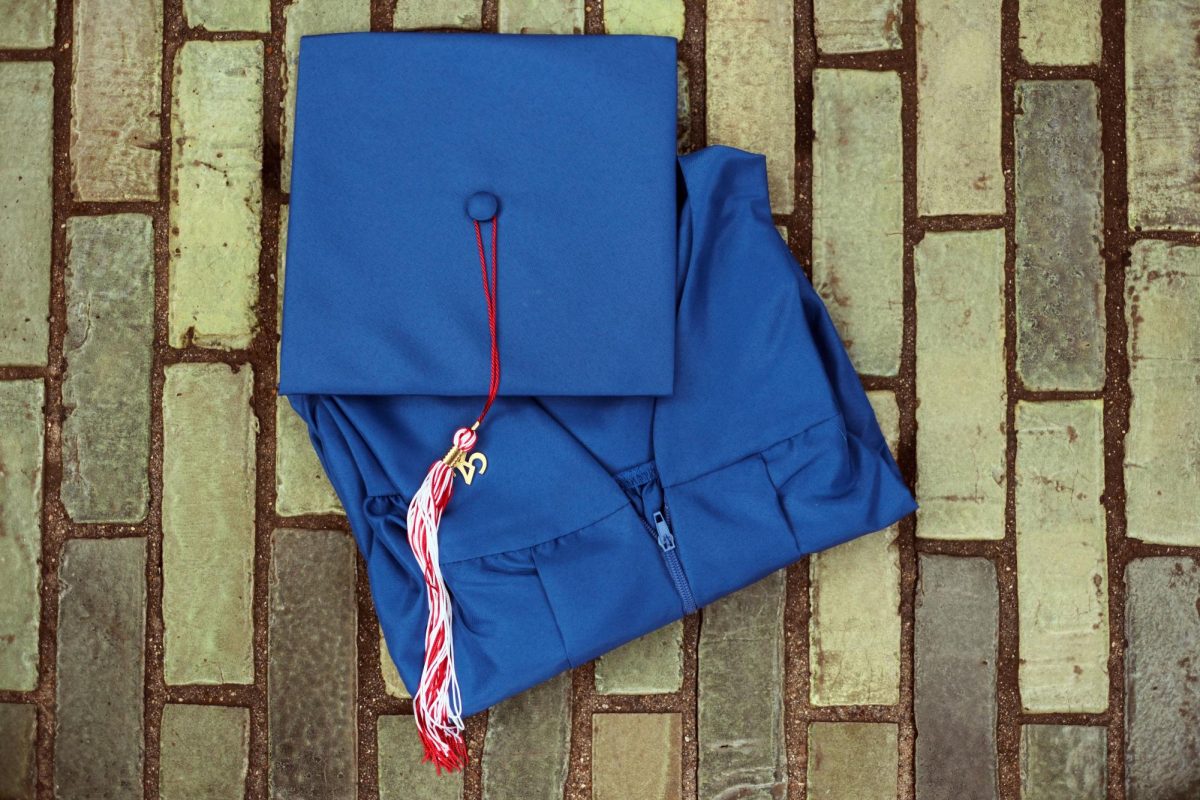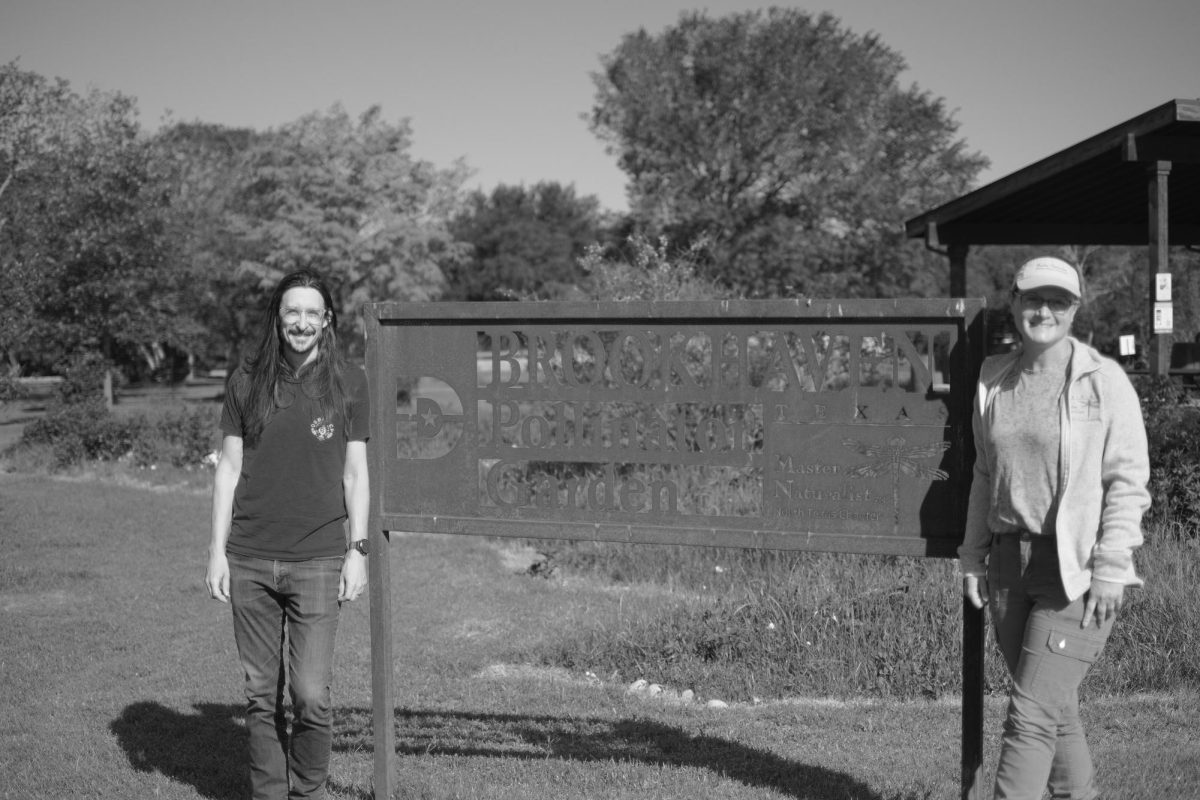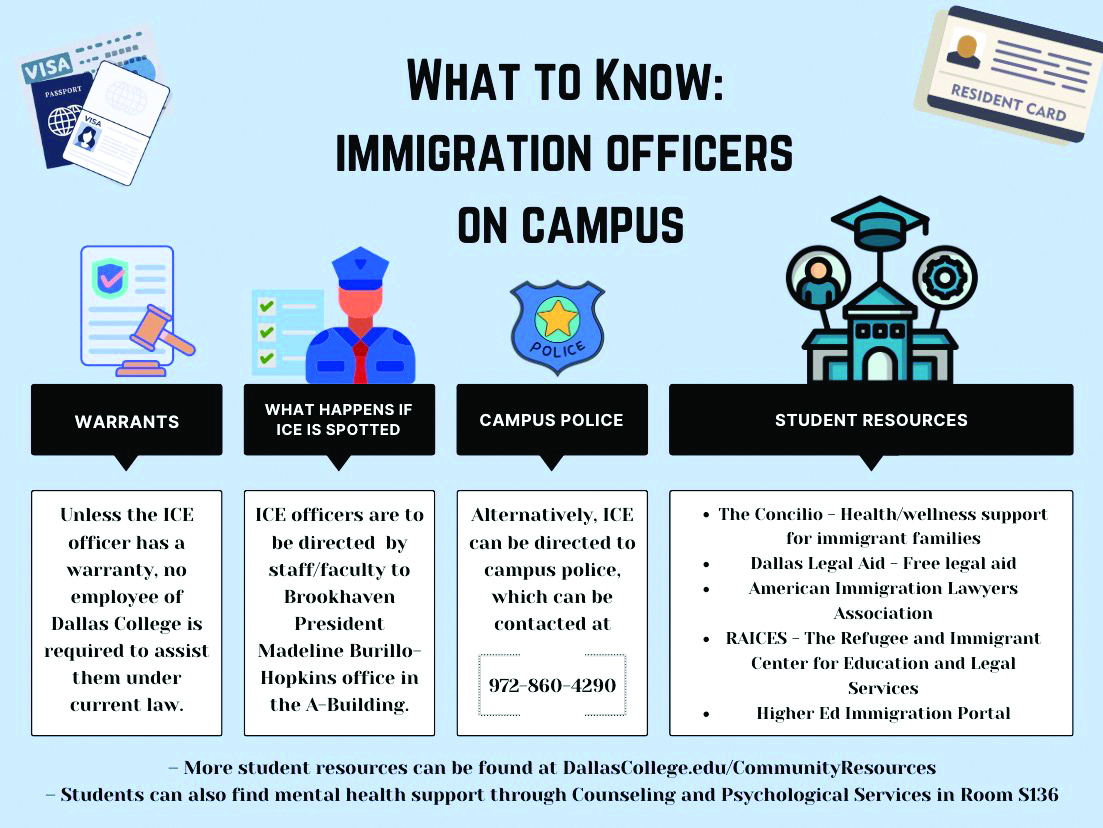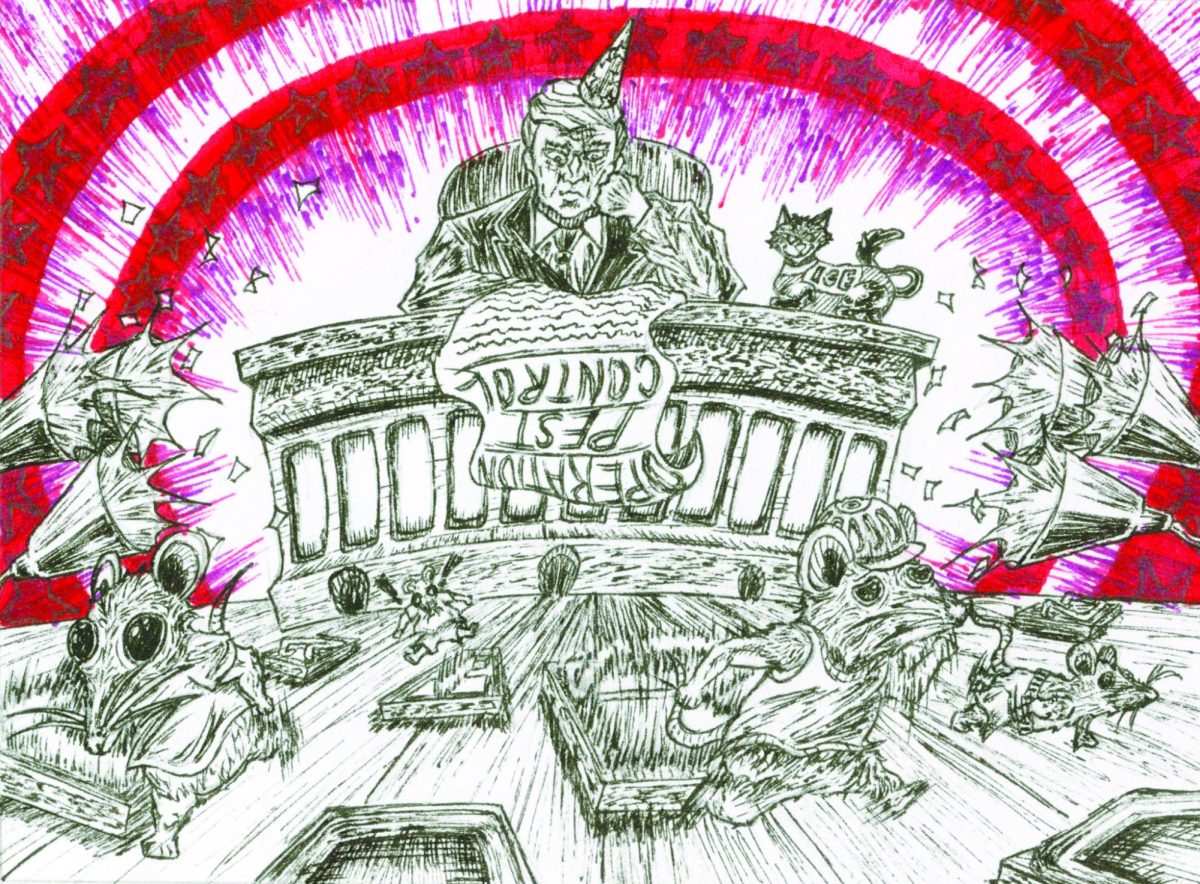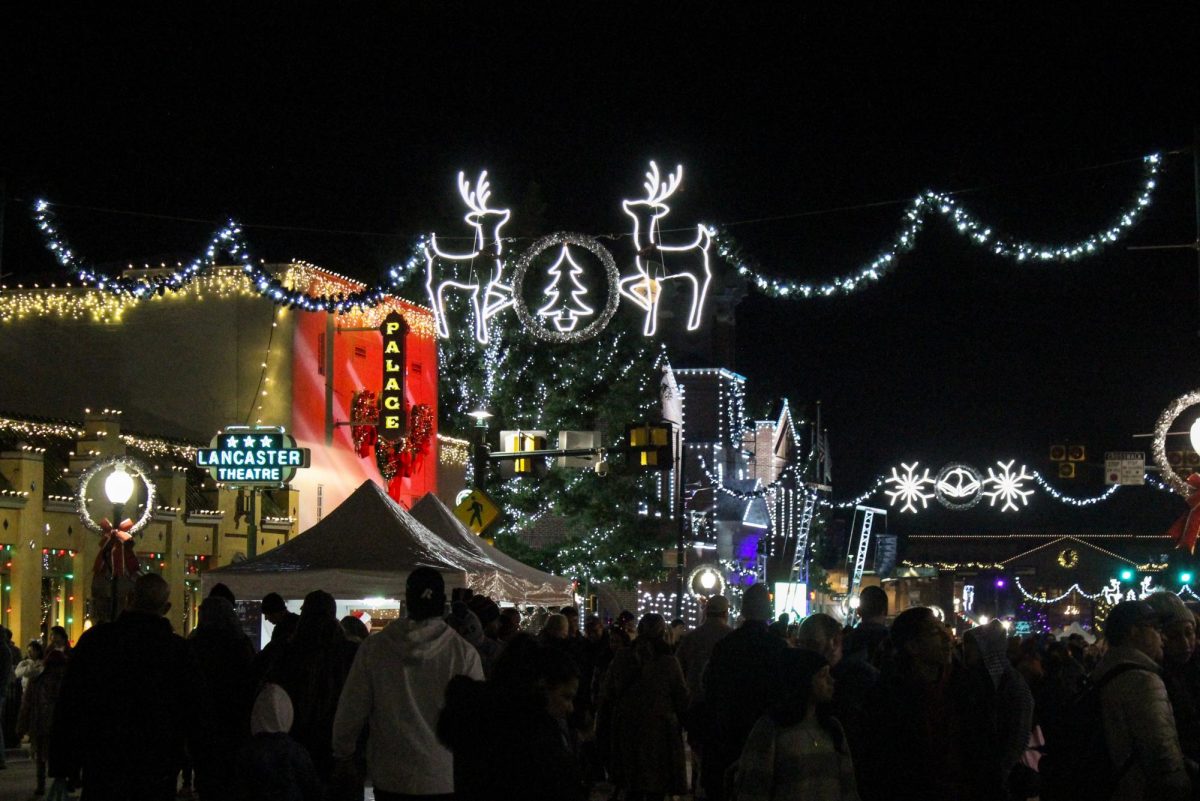Part two of a three-part series
By Jubenal Aguilar
Managing Editor

The El Centro, U.S. and Texas flags fly at half staff outside the front entrance of El Centro College July 19.
“Beware, there’s a shooter coming your way,” read a text Joseph Hannigan, El Centro College’s police chief, received, warning him of a shooting in downtown Dallas.
“Wrong,” Hannigan replied, indicating the warning was too late. “He’s having a shootout with a police officer in our stairwell.”
The chief’s reply was to David Browning, El Centro’s vice president of business, who was watching the news rapidly unfold from home.
On July 7, a Black Lives Matter protest moving along downtown Dallas’ Main and Lamar streets came to an abrupt and violent end at 8:58 p.m. The shooter Micah Johnson’s rampage quickly turned to El Centro – a place Jose Adames, El Centro’s president, later called one of the safest places in downtown.
THE BEGINNING
“We had five police officers that night,” Hannigan said. “We got word from Dallas Police Department’s intelligence unit that there would be a protest passing by our campus.”
At 7 p.m., Hannigan ordered the campus doors locked as a precaution to avoid unnecessary confrontations with protesters.
Hannigan said he ordered his officers inside the building, behind the now-locked doors, as he was made aware the protest had grown to about 1,500 participants.
Hannigan said the officers heard gunshots near the Lamar Street entrance.
“Rapid fire. It was rifle fire, clear as day,” Officer John Abbott, an Iraq War veteran, said.
Without hesitation, Detective Bryan Shaw and Abbott ran toward the Lamar Street entrance as soon as they heard the sound of gunfire.
“The glass door exploded in front of me,” Abbott said. Johnson had fired at the double glass doors in an attempt to enter the building. By then, three DPD officers and one Dallas Area Rapid Transit officer lay mortally wounded on the streets.
Abbott and Shaw retreated to hard cover to check that no one else was hit. Abbott was injured by the shattering glass.
Shaw said he felt discomfort. “I didn’t feel pain, so I assumed it was glass,” Shaw said.
Possibly seeing the two officers, and with a group of at least six other officers trailing him, Johnson turned back and ran north along the building. He turned left on Elm Street, using the school’s pillar as cover from oncoming patrol cars.
Abbott attempted to exit the building through the damaged doors. Once outside, he saw Brent Thompson, a DART police officer, lying on the ground.
“He had been shot in the head, and we started to work on him,” Abbott, said. “We cut his clothes off and saw that he’d been shot in the chest.” But it was too late, Abbott realized there was nothing he could do for his friend.
Abbott worked for DART police for six years prior to joining El Centro’s force; that was where he met Thompson.
Investigators later learned that Thompson was shot from behind.
Eyewitness video that quickly went viral allowed everyone to see what happened during Thompson’s confrontation with Johnson. A shootout with the pursuing officers left Johnson injured.
In the video, viewers saw Johnson using his military training to ambush Thompson as he maneuvered around the pillars.
Abbott was ready to follow when he heard Shaw over the radio, “He’s in the building.”
LOCKED INSIDE
About 58 students, staff and faculty were inside the campus during the lockdown, Hannigan said. Most of them were on the seventh and eighth floors.
Another group of eight sought refuge inside a janitor’s closet when they knew the shooter had entered the building.
Hannigan said faculty followed the established lockdown procedures.
“They turned out the lights, locked the door and got to an area of the room that wasn’t visible from the doors,” Hannigan said. “Once we identified what rooms they were in, we sent officers up to those rooms to stay with them until we could safely evacuate them.”
INSIDE EL CENTRO
Hannigan said civilians were released at different times depending on intelligence indicating it was safe to do so.
Johnson forced his way inside the campus through the Elm Street entrance.
“We noticed a trail of blood leading from the Elm Street doors to the B [Building] stairway,” Hannigan said.
Shaw attempted to follow the suspect, but was met with a rain of bullets. Two impact craters from Johnson’s fire are still visible on the stairs today.
Johnson retreated onto the second floor, leaving a trail of blood.
Hannigan said officers used the school’s camera system to attempt to monitor Johnson’s movements. However, El Centro’s website, which was on the same server as the monitoring system, was overwhelmed with traffic from people attempting to find information. The traffic increase downed the web server, taking with it the surveillance system.
The shooter, now in full retreat, ran down a dark hallway leading up to the library and turned right, creating distance between the officers and him. He made a sharp right and entered the library through a back door.
It was that hallway where Johnson would make his last stand.
He shot out one window aiming at Sgt. Michael Smith, his fifth mortally wounded victim, as he got out of his patrol car in front of a 7-Eleven across the street.
“By then, DPD officers were coming in with patrol rifles,” Hannigan said. Stack teams were set up to ascend the stairs and corner the shooter. “We had to go slow and do a room-to-room search,” Hannigan said.
The shooter was held at bay until the SWAT team arrived, Hannigan said.
Shaw was reassigned to a rifle post in C Building working side by side with DPD. It was not until then that he realized a bullet had grazed his stomach earlier, leaving shrapnel.
Johnson barricaded himself in an area where he could not easily be reached. Hannigan said no one could enter the hallway without getting shot.
For more than four hours, SWAT attempted to negotiate with Johnson with no success.
Hannigan said several hundred rounds of fire were exchanged.
“The SWAT commander on scene and Officer Abbott made a determination that the suspect couldn’t be reached from his hiding place with conventional weapons,” Hannigan said.
The decision to use a bomb to end the standoff was made by the SWAT commander, Hannigan said. He said everyone present was in agreement with the decision.
“It’s a common military tactic,” Abbott said. However, it was an unprecedented one for U.S. law enforcement agencies.
At about 1:30 a.m., a loud boom was heard across the campus. The robot detonated a brick of C-4, an explosive, killing Johnson.
A single shot was heard from Johnson’s arsenal after the explosion.
DAMAGE AND AFTERMATH
The explosion damaged the hallway and ceiling tiles. Wires inside the walls became exposed, and a nearby server room was damaged.
Adames said the server room received minor damage. The school’s website and closed camera system went down completely after the incident as network cables were damaged.
Rebuilding will cost El Centro $585,293, Adames said. The quote does not include hazardous material cleanup and rebuilding preparation.
Adames said El Centro has come out of the incident stronger than before. He said a collegewide meeting was held at the Bill J. Priest Institute for Economic Development building, where staff and faculty expressed their concerns. Adames said the meeting brought back the strong sense of family the institution has always had.


